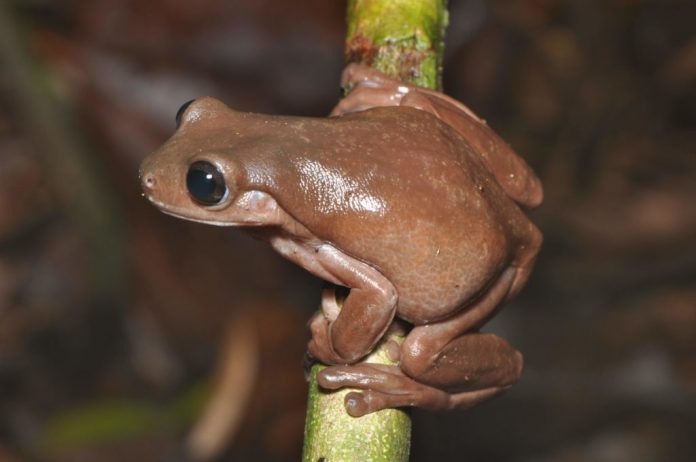A potentially new species of tree frog has been discovered in New Guinea, and for starters, it’s not the typical green of its relatives. Instead, this creature sports a beautiful chocolate brown.skin.
Tree frogs are generally known for their green skin, but once lead author Dr Paul Oliver, Centre for Planetary Health and Food Security and Queensland Museum saw the brown skin of the new species Litoria mira they started calling it a chocolate frog and the name stuck.
“The closest known relative of Litoria mira is the Australian green tree frog. The two species look similar except one is usually green, while the new species usually has a lovely chocolate colouring,” Dr Oliver said.
“We named this new Litoria frog species Mira, which means surprised or strange in Latin, because it was a surprising discovery to find a an over-looked relative of Austalia’s well-known and common green tree living in the lowland rainforests of New Guinea.”
Steve Richards from the South Australian Museum, who co-authored the paper said the researchers thought the species is probably widespread in New Guinea.
“Because the frog lives in very hot, swampy areas with lots of crocodiles, all these things discourage exploration,” Dr Richards said.
“While New Guinea is not a place most Australians know well; many animal groups are shared. So understanding biodiversity in New Guinea helps us to understand the history and origins of Australia’s unique fauna.”
While Australia and New Guinea were linked by land for much of the late Tertiary (2.6 million years ago) and share many biotic elements, New Guinea is now dominated by rainforest, and northern Australia by savannah.
“Resolving the biotic interchange between these two regions is critical to understanding how the rainforest and savannah habitat types have the expanded and contracted over time of both,” Dr Oliver said.
“Estimates for divergence of the new species in our study shows that in the Pliocene (5.3 to 2.6 million years ago) there was still connectivity between the two species the across lowland tropical habitats of northern Australia and New Guinea.
“These results emphasise that the extent and connectivity of lowland rainforest and savannah environments across northern Australia and southern New Guinea and the profound shifts the region has undergone since the late Pliocene.”















